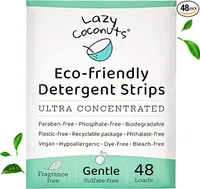Does fireplace ash whiten whites? Experts advise on using this unexpected natural cleaner at home
Using dirt to bleach white clothing? This ingenious method has been used for centuries


When it comes to making white clothes white again, rubbing dirt into them is the last thing you would think of doing.
But, as it turns out, using fireplace ash in laundry could help to bleach white clothing and return it to looking new again. There are hundreds of hacks on the internet for doing laundry, but using fireplace ash may be one of the most surprising we have seen yet.
This unusual method is thought to have been used for centuries for getting marks out of clothing.
Can you use fireplace ash in laundry?
While it certainly helps to whiten clothes, inconsistent results can make this method tricky to get right, experts warn. Here, professionals share how to whiten clothes with fireplace ash, and explain why this technique should always be used with caution.

‘Fireplace ash has a high pH level, which means it is a base. When mixed with water, the potassium hydroxide dissolves and creates an alkaline solution that breaks down the chemical bonds between the stains and the fabric fibers and dissolves dirt and stains on clothing,’ explains William Henry, CEO of LEDask and former janitorial manager.
‘This helps to brighten whites by removing any yellowing and by neutralizing acidic residues. However, it is important to note that fireplace ash can be abrasive and may damage delicate fabrics if not used with caution,’ he warns.
‘I would advise that it is also not a reliable or consistent whitening agent, as the concentration of potassium hydroxide can vary depending on several factors – for example, the type of wood burned, the temperature at which it was burned, and the length of time it was left to cool.’
Design expertise in your inbox – from inspiring decorating ideas and beautiful celebrity homes to practical gardening advice and shopping round-ups.
Nevertheless, if you are looking for a natural bleaching product to avoid using bleach in laundry, and would still like to give fireplace ash in the laundry a go, here is how to do it. Fireplace ashes can also be used for a whole host of handy household cleaning tips, from using ashes in the garden for compost, and cleaning fireplace glass with ash.
How to use fireplace ash in laundry

1. Leave the fireplace ashes to cool completely
When picking ash from your fireplaces, it is always best to allow them to sit for several hours to a day before using them on your laundry, recommends Cynthia Hamilton, the marketing director at OGLF. ‘Use this approach if you're seeking a natural bleaching solution for your laundry. Before you attempt it, be sure the fire has been extinguished and the ashes are cool. This is to prevent burning both your skin and leaving singe marks on your clothing.’
2. Only use untreated wood ash
It is unlikely that you pick your firewood based on your laundry routine, however, making sure to use the right log ash can make a huge difference in whitening your clothes. ‘Use only untreated wood-free ashes since treated wood can be toxic, and these ashes can be dangerous,’ Cynthia Hamilton warns.
3. Use safety precautions such as gloves to protect skin
Despite being an all-natural cleaner, wet fireplace ash creates a substance called lye – the alkaline chemical used to make soap. This product is great for cleaning, but also strips moisture away from your skin and can irritate the lungs if inhaled too deeply. As a result, you should take proper safety precautions when using it to clean laundry.
‘Wear gloves [such as these long cleaning gloves from Amazon] and avoid inhaling the dust particles when handling fireplace ash by wearing a mask, avoiding wafting or quick movements, or opening windows,’ advises Jen Stark, founder of Happy DIY Home, a leading gardening and home improvement blog. ‘Additionally, be careful not to use too much ash as it can leave a residue on the clothes.’

Jen Stark is the founder of Happy DIY Home. A master gardener, interior designer and home improvement expert, she has completed many home improvement, decor, and remodeling projects with her family over the past 10 years on their 4,500 sf Victorian house.
4. Create a lye paste of ash and water and apply to the stain
After being sure to sort clothes for laundry into distinct white and dark garments, check your clothes’ laundry symbols to then filter out any pieces that need a delicate wash only, then you can get to work spot-treating stains.
‘Once you have established your wood ash is untreated, then you can submerge the collected ash in a plastic bowl (not glass) or bucket of water overnight to help create lye,’ recommends Cynthia Hamilton of OGLF. For every one cup of ash you should add around two-and-a-half cups of water. After allowing it to sit for 24 hours, you can strain the solution to remove particles – the leftover liquid is the pure lye perfect for making laundry detergent, or even homemade soap.
Apply the lye directly to the stain using a fine brush such as an old, clean toothbrush, and allow it to sit for a few minutes before washing it off with plain water.
‘Before using fireplace ash on your clothes, test it on a small, inconspicuous area of the fabric to make sure it doesn't cause discoloration or damage,’ reminds Jen Stark of Happy DIY Home.
5. Wash the clothes as normal
After you have rinsed the paste off with water, then you can run your white clothes and linens on a normal laundry cycle, making sure to wash whites in cold water to help prevent graying.
One great laundry lesson to keep note of is to wash clothes inside out. This helps to prevent both loss of color, and reduces excessive clothes lint that can leave clothes looking rough and unkempt.
Alternatives to fireplace ash for whitening clothes

One of the biggest mistakes to avoid when washing whites is neglecting to use a bleaching agent to help prevent graying and yellowing. ‘There are other alternatives for whitening clothes, such as using hydrogen peroxide, baking soda, or lemon juice in laundry,’ Jen Stark of Happy DIY Home suggests. ‘These methods may be safer, quicker, and more effective than using fireplace ash.’
Eco-Friendly Laundry Detergent Sheets | $15.95 at Amazon
These eco-friendly laundry strips are 100% made from plants, plastic-free packaged in recyclable cardboard.
FAQs
Does fire ash stain clothes?
Fire ash can stain clothes, especially when rubbed into the fabric. It is important if you have got dark ash on your clothes to avoid scrubbing and rather blot the mark to help lift it away from the fabric. Use traditional stain removers to help reduce the stain before laundering as normal – repeating the process as necessary to help remove the stain completely before tumble drying.
How do you turn ash into soap?
You can turn wood ash into soap by combining untreated, cooled wood ash with water to form lye – the alkaline chemical used to make commercial soaps and detergents. It is best to use boiled, soft water for this, allowing the mixture to sit for a few days before straining to extract the lye to use in a soap-making process involving emulsifiers, scented oils, and fats.

Chiana has been at Homes & Gardens for two years and is our resident 'queen' of non-toxic living. She spends most of her time producing content for the Solved section of the website, helping readers get the most out of their homes through clever decluttering, cleaning, and tidying tips. She was named one of Fixr's top home improvement journalists in 2024.
